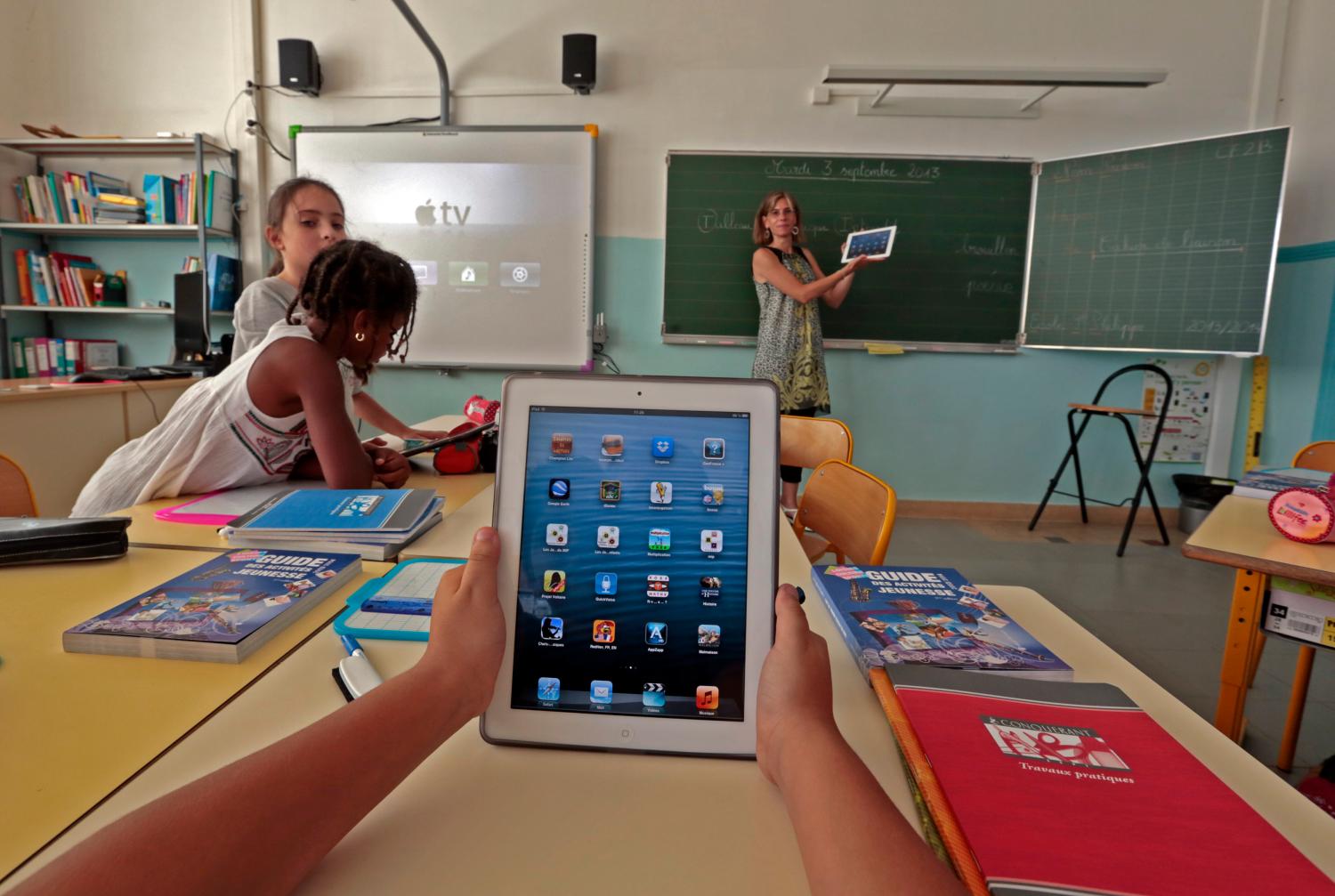Editor’s Note: This article was first published on TechTank as part of the Ideas to Retire series. Read more essays in the series here.
Nearly every aspect of the world is being transformed by digital tools. Over Thanksgiving weekend in 2015, more people shopped online than braved the aisles of brick and mortar stores fighting for highly discounted items. Globally, there are 2.6 billion active smartphone subscriptions. And self-driving cars have already clocked over one million miles on public roads. There is no doubt that technology is impacting how we educate our children and ourselves as well. Over 21 million post-secondary students are enrolled in online courses. Computers are in virtually every school in the country and more of those computers are connected to the Internet than ever before. In fact, the number of students with broadband at school increased by 20 million over just the last two years. Because technology is widely perceived to improve our day-to-day experiences, it is logical to conclude that technology will improve learning outcomes in our nation’s schools by itself. This is an idea that must die.
For generations, the belief that new technology will either transform or make schools obsolete has persisted. Thomas Edison believed the motion picture would revolutionize education. Those that followed him thought that radio would do so, and others thought that television would be the end of schooling as we know it. In more recent years, the intelligent tutoring system, e which provides customized learning to students who essentially work alone with a screen, has been seen as a replacement for teachers. Yet each successive wave of technology has failed to live up to its hype, and millions have been spent trying to make technology do what it, alone, cannot do. Ultimately, it is not the technology that does the teaching. Technology is a tool that is wielded by people to accomplish specific ends. While it can serve as an accelerator, it can just as easily accelerate poor strategies as effective ones. It is the teaching approach—the pedagogy—that ultimately determines learning outcomes. Once this is understood, a series of other misconceptions also fade.
For example, there is a belief that students today are “digital natives” and as technology-savvy, multi-tasking, always-on individuals, they don’t need to be taught how to use technology effectively in order to learn. This is simply not the case, and extensive reviews of the research have proven otherwise. 1,2 Acumen with social media or even extensive experience mining the Internet for information does not transfer directly to the acquisition of the knowledge, skill, and mindsets associated with mastering a particular domain of expertise. Familiarity with technology, while helpful, is insufficient for understanding the structure, practice, and perspectives of a discipline that is required for learning.
What does make a difference is how students use technology. When students use technology in passive ways to consume media, even educational media, the positive impact is limited. But when students use technology actively, as a tool to create, to design, to explore, and to collaborate, they enable new kinds of deep, often transformational, learning experiences. Examples include “creation and sharing of animated films that use computer game engines and footage (machinima); posting and critiquing of creative writing related to popular culture (fan fiction); … and creation and posting of short dramatic or humorous films on YouTube (video production).3
Similarly, access to technology doesn’t transform teaching. One of the most pernicious tendencies of schools is to simply copy and paste marginally effective practices from the analog world to the digital world. Worksheets are scanned, spelling lists are reproduced in static digital pixels, and empty text boxes with blinking cursors await the same short answers that were printed on the page. School leaders who believe that the presence of technology, by itself, is transformational, fail to provide teachers the professional learning opportunities they need to be successful in using it to transform their practice.
Research indicates that teachers have the most significant impact on student learning out of all other school-level factors. But more than two thirds of teachers say they would like more technology in their classrooms, and roughly half say that lack of training is one of the biggest barriers to incorporating technology into their teaching4 As discussed in the 2016 National Educational Technology Plan (NETP), entitled Future Ready Learning: Reimagining the Role of Technology in Education we cannot expect individual educators to assume full responsibility for bringing technology-based learning experiences into schools.
According to research cited in the NETP, teachers need continuous, just-in-time, job-embedded support that includes professional development, mentors, and informal collaborations to use technology successfully in their classrooms. This training should focus “explicitly on ensuring all educators are capable of selecting, evaluating, and using appropriate technologies and resources to create experiences that advance student engagement and learning.” The transition to technology-enabled preparation and professional development will entail many teacher preparation institutions, state offices of education, and school districts rethinking their instructional approaches. They must rethink the techniques, tools, and the skills and expertise of the educators who teach in these programs.
Some may find it ironic that, in turning to technology for answers, we find ourselves turning right back to teachers. To be clear, we are not suggesting that technology can’t be transformational. Instead, teachers should take on new roles and approaches to using technology that transform the learning experiences they offer to students. We need to help educators become fluent users of technology, creative and collaborative problem solvers, and adaptive, socially aware experts throughout their careers. We need to equip them with a pedagogy that is rich in project-based, authentic learning experiences that require students to use technology as tools for discovery, collaboration, and the creation. Only then will we see the full impact of what is possible with technology.
The notion that technology itself can improve student outcomes must die. However, the notion of a well-trained teacher, effectively wielding technology while finding new ways to discover and create, promises to transform the learning experience.
1Wang, S.-K., Hsu, H.-Y., Campbell, T., Coster, D. C., & Longhurst, M. (2014). An investigation of middle school science teachers and students use of technology inside and outside of classrooms: Considering whether digital natives are more technology savvy than their teachers. Education Technology Research and Development, 62(6), 637–662.
2Bennett, S. J. & Maton, K. (2010). Beyond the ‘digital natives’ debate: towards a more nuanced understanding of students’ technology experiences. Journal of Computer Assisted Learning, 26 (5), 321-331.
3Warschauer, M., & Matuchniak, T. (2010). New technology and digital worlds: Analyzing evidence of equity in access, use, and outcomes. Review of Research in Education, 34(1), 179–225 (quote from p. 193).
4Bill & Melinda Gates Foundation. (2012). Innovation in education: Technology & effective teaching in the U.S. Seattle, WA: Author.


